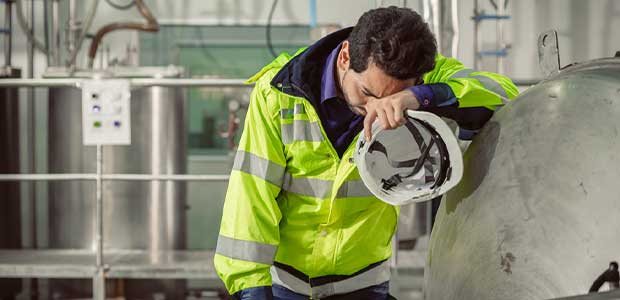
The Effects of Fatigue on Worker Safety
When workers are fatigued, it can put them and others at risk.
- By Alex Saurman
- Aug 12, 2022
Fatigue has the potential to affect everyone.
From night shift workers to doctors and nurses, many professionals are exposed to factors that can lead to fatigue. In the workplace, factors like stress, demanding tasks, heat and irregular schedules all contribute to fatigue, according to the National Institute for Occupational Safety and Health (NIOSH).
When a worker is fatigued, it can lead to less concentration, reduced reaction times and impaired judgement, NIOSH says. It can also put workers, co-workers and employers at more risk for accidents, such as in the case of an incident in Texas.
On March 23, 2005, at BP Texas City Refinery in Texas City, Texas, an explosion and fire occurred, leading to the death of 15 people and the injury of 180 more. According to the Investigation Report by the U.S. Chemical Safety and Hazard Investigation Board, it also cost more than $1.5 billion dollars in financial loss.
Although there were many factors involved in the incident, one “likely” factor listed in the report was fatigue. Four operators were working multiple consecutive days, one for 29 days (who experienced “acute sleep loss and cumulative sleep debt”), one for 33 days, one 37 and one 31. All of these workers were also working 12-hour shifts, the report says.
“…Operator fatigue likely contributed to the incident by impairing operator performance,” the report says.
“Evidence suggests that the operators’ fatigue degraded their judgment and problem-solving skills, hindering their ability to determine that the tower was overfilling,” the report later said.
According to the National Safety Council (NSC), about 13 percent of injuries in the workplace involve fatigue. Reducing the potential for worker fatigue is essential for everyone involved. There are steps employees and employers can follow to mitigate the risks associated with fatigue.
In order to be well rested, workers should make sure they sleep at least seven hours, OSHA says. If workers need a nap before work, the nap should fall between a certain time period, less than 45 minutes or greater than two hours, for the body’s sleep/wake cycle to be complete. Night shift workers can take additional precautions, ensuring that their sleep cycle was at least eight hours prior to their shift. Factors like diet and exercise can also aid in sleep.
As an employer, there are many changes that can be made to decrease worker fatigue. Employers can change schedules and staffing to ensure every worker has time to rest. They can also make physical changes such as changing lights to “increase alertness,” OSHA says.
Another great step to reduce fatigue is to educate employees. The NSC has numerous reports and resources on fatigue, including Fatigue in the Workplace: Causes & Consequences of Employee Fatigue and posters for your place of work. NSC also has resources for employers.
About the Author
Alex Saurman is a former Content Editor for Occupational Health & Safety,who has since joined OH&S’s client services team. She continues to work closely with OH&S’s editorial team and contributes to the magazine.